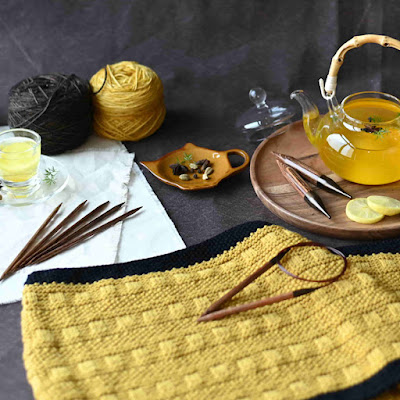In today's fast-paced world, children are surrounded by screens leading to stress, anxiety and health ailments. To nurture a child’s well-being, activities like knitting boosts focus, creativity, and skills. The yarn craft is everything and a little more. With just a pair of knitting needles and yarn, they can express creativity, and at the end of it, they get a perfectly usable project.
Knitting is a perfect craft to introduce to the little ones, but the only side effect that we can think of is that they would never go back to the screens. Did you know knitting is equal to therapy? The yarn craft has joined the ranks of meditation and overall wellness, with medical practitioners also prescribing the craft to cope with anxiety and nervous energy. In fact, many school curriculums include the yarn craft for young ones.
Before you hand your children a pair of single-pointed knitting needles or your favorite circulars and yarn to teach them the steps, here's what you need to know.
1. Creativity and Self-Expression
Knitting fuels creativity in children. They put their imagination to use - from choosing vibrant yarn colors to selecting knitting patterns to work on projects as unique as their personalities. Whether it's a scarf, socks, hat or a beloved doll, a handmade creation is our expression of creativity. A completed project cultivates a sense of pride and fostering a love for artistic expression.
2. The Calming Power of Crafting
In our technology-driven world, children are prone to experience stress and anxiety. Knitting with the rhythmic movements of the knitting needles and the repetitive nature of the activity, reduce stress levels and have a calming effect. It believed to similar to meditation. This mindful practice allows children a much-needed break and find inner peace.
3. Building Confidence
Confidence in children come with knowledge. Learning a skill like knitting brings a sense of accomplishment and a belief in their abilities. Mastering basic stitches and progressing to more challenging patterns, overcoming mistakes and seeing their project come together builds self-esteem and resilience, making valuable life skills.
4. Developing Motor Skills
Young children who engage in knitting develop fine motor skills. The repetitive motions of knitting provide an excellent workout. The steps of maneuvering the knitting needles and manipulating the yarn is a muscle workout that goes straight into memory, developing into skills. The activity helps strengthen the muscles in their hands and fingers, improving agility and coordination. The enhanced skills translate into everyday tasks like neat handwriting and handling cutlery more easily.
5. Improves Brain function and Cognition
Research says that knitting improves brain activity especially cognition. For children, following knitting patterns requires concentration and planning, thereby honing their ability to follow instructions and visualization. Working on basic maths, such as counting stitches and rows, strengthens understanding of concepts such as deciphering patterns, sequencing and spatial reasoning. This mental workout keeps young minds engaged and sharp, laying the foundation for better learning.
6. Fostering Social Connections
Knitting creates connection. Children learn to knit from grandparents, parents, siblings or a mentor, creating a passing of traditions and skills. Additionally, joining a knitting group or participating in online communities allows children to connect with other young crafters, expanding their social circle and creating a sense of belonging.
7. Sustainable
The benefits of knitting for children extend beyond skills. The crafting skills are a gift. Kids learn about slow fashion that is sustainable plus satisfying. A hand-knitted sweater, socks, or even a scarf are not just wonderful additions to the wardrobe they also make wonderful gifts.
Now, you are ready to go introducing children to knitting. Our guide on teaching children to knit will help you get started. Choose a pair of knitting needles from your own collection or get them their first kit. Bamboo is a beginner-friendly material, so choose a pair. You can also get them a set of fixed circular knitting needles for practice. Once they have the confidence, introduce a knitting needle set of interchangeable needles. Keep the double-pointed needles for later, when they have the skills to work in the round and handle multiple needle tips. Knitting accessories are essential for smooth rafting, so make sure the children have the right tools. A pair of sharp scissors, stitch makers, measuring tape, stitch holders, needle cases, yarn bags and pattern readers. For yarn, children can knit with wool, or choose a merino-polyamide blend that offers durability along with beauty.


No comments:
Post a Comment